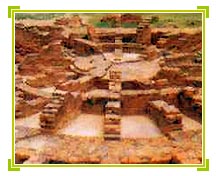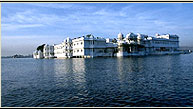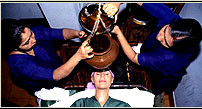-| Sanghol | -
Location: District Fatehgarh Sahib (Punjab) Lat 30º 48'E, Long 76º
12'N

The Buddhist site of Sanghol is famous for 117 fresh red sandstone sculptures
of Kushana period ( 1st Century BC to 1st century AD) found in the core of the
unfinished cylindrical stupa which was supposed to have been erected during
the early part of Christian era. The excavation of the Uchacha – pinda
ancient site was carried out by Archaeological Survey Of India. The excavations
revealed ruins of a cylindrical stupa. The architectural plan of the stupa resembles
a Dharma – Chakra of spooked wheel of Ashoka, marked by three concentric
rings of brick masonry with intervening space divided by radiating spokes of
similar brick masonary at regular intervals. The core of stupa consists of a
thick circular wall of brick masonary of Kushan period filled with earth. To
the northeast of the stupa, the remains of a monastery complex were found, which
was probably on usual chatusala plan. The spectacular discovery at the site
consists of 117 fresh red sandstone sculptures of Kushan period. All these are
of single railing encircling the stupa on the square platform. The sculptures
belonged to the Mathura school of Indian art and include corner pillars, upright
pillars, double sided pillars, cross bars and copying stone depicting voluptuous
figures of women standing in alluring postures and at times engaged in amorous
activities. These sculptures and railing stones were carefully concealed in
a pit to safeguard them from onset of the Huna invasion of the north-western
India during this period.
A beautiful carved lid of the relic casket from the site was found among other
antiquities of Kushan Period, bearing an inscription in Kharoshthi characters
that can be dated to the 1st century BC till 1st century AD, which reads “Uparskasa
Ayabhadasa”.




